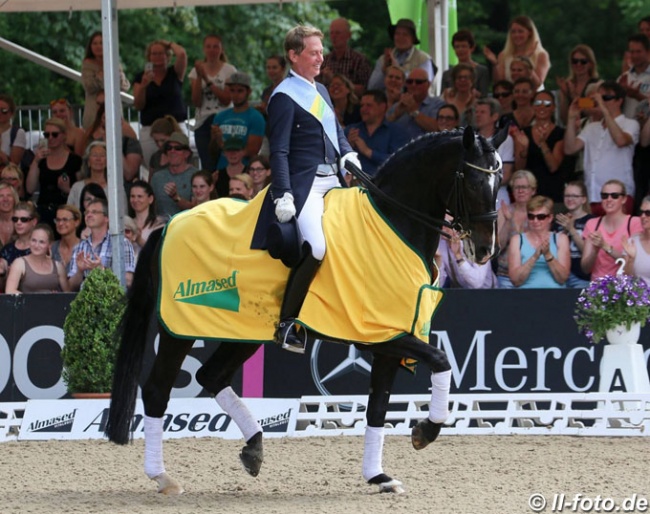
We can learn a lot about a rider by getting on their horse. Often if we get on a horse after someone has been training it, particularly if they have been training it long term, you can understand a lot of the learned patterns and habits of that rider. The horse is like a mirror and he reflects our imbalances and weaknesses.
Ever sat on a horse and looked at the rider and thought, “how do you sit on this everyday?”. It might be that the horse is so stuck on one rein you feel as if you might fall off to that side. It might be that the back is like a wooden plank that sends shocks up your spine. It can be that you ask the horse to move off and you wonder if he felt anything at all, like his body is just a slab of numbness and you feel like it might be better to get off and push on foot!
We have all seen an instructor get on a pupil’s horse, and stare at them in shock at how they got in such a muddle. Dressage isn’t easy, but in the most part it’s the riders who are transferring their unbalanced inaccuracies, rather than the horse lacking the proper conformation or talent.
Nuno Oliveira used to say that you could teach a horse to do a flying change by touching his ear if that’s how he learned it. I think this is interesting. He is basically saying that a horse can learn anything as long as we teach him in a clear way with good communication and consistency.
Good communication and consistency. Seems easy. Right?
What if you sit one centimeter to the left. Shouldn’t make much difference? What if then every aid to the left is totally different to the right because your left leg is in a different position and your left hip and shoulder and basically every part of your body and thus every aid is not consistent left to right? What if communication is blurred because one day you’re tense and the next you’re relaxed and this changes the way you deliver the aids? What if you are naturally stronger on your right so what you perceive is an even contact is actually a horse leaning on the rein right? What if this continues day in and day out until the horse only bends to one way and is stuck completely to the other?
There will be no straightness and no engagement and no ability to stretch the top line as the horse will be contracted against the rider’s stronger side! A seemingly small imbalance and the effects carry into every aspect of training.
It’s our duty as riders to eliminate these tendencies and thus provide our horses with solid communication and consistency of the aids. We do this by evaluating ourselves and adjusting, watching and accepting, and knowing that if the horse is not understanding then he is not deliberately disobeying you, you just aren’t speaking to him in the right way!
Kyra Kyrkland says that riding someone’s horse can tell her how the rider is coping with the horse they are riding and how the horse is responding to the rider’s aids.
“I think all horses are a bit different and you have to find the right “key” to every horse. By trying them out yourself, you can make the rider aware of what they have to change or focus on,” said Kyra.
If someone gets on your horse, try to listen to their feedback and understand they might be helping you to find that key!
Unfortunately a horse can occasionally seem from the outside to be quite balanced , and it’s only when someone else sits on him that they feel what is happening. Try to be open minded as no rider is perfect, and it’s often the small changes that can make the greatest difference!
Text by Sarah Warne - Photo © LL-foto
Related Link
More Classical Training Articles by Sarah Warne on Eurodressage